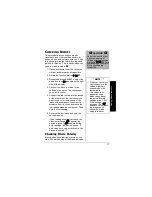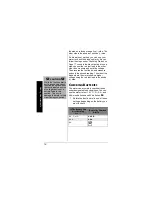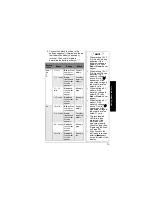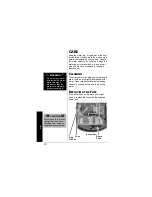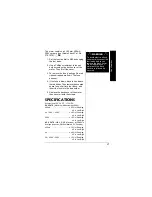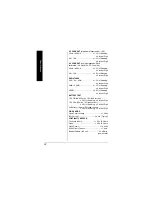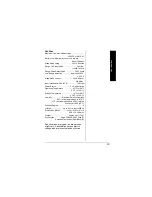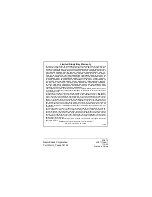
13
M
a
king
M
easure
m
ent
s
Measuring AC Voltage Riding
On a DC Source Bias
o
1. Disconnect power from the circuit you
will test.
2. Set the function dial to
. The meter
automatically selects auto range and
the DC measurement mode.
3. Press
SELECT
to select the AC mode.
appears.
4. Connect the black test lead to the
circuit’s neutral or ground lead.
5. Connect a 0.1 microfarad/100V mylar
capacitor in series with the positive
terminal of the voltage source and the
red test lead.
6. Apply power to the circuit. The display
shows the AC voltage.
o
7. When you finish measuring AC voltage,
turn off the power of the circuit under
test, then disconnect the capacitor you
connected in Step 5.
Measuring Three-Phase
AC Voltage
Your multimeter is designed primarily to
measure household AC voltages. If you
want to measure 3-phase, line-to-line
voltage, please note the following:
• Because of the dangers inherent in
measuring three-phase circuits, we
strongly recommend you do not use
this meter for such applications.
• The actual voltage can be greater than
the circuit’s rated line-to-ground voltage.
CAUTION
Before measuring AC
voltage riding on a DC
source bias, measure
the DC voltage first. If it
exceeds 100V, stop
measuring.
V
Ô
NOTE
Ô
In the 400 V and 400mV
ranges, the decimal
point appears in the
same position (one
place to the left). To
distinguish between the
two ranges,
mV
appears
in the 400mV range and
V
appears in the 400 V
range.
o
WARNING
o
•
To avoid injury or
damage to your
meter, never try to
measure an AC
voltage that is riding
on a DC source bias
where the peak AC
voltage exceeds 100
V with respect to
earth ground.
•
To avoid electrical
shock, do not
physically touch the
test leads, the
capacitor, or the
circuit under test
while applying power.

















